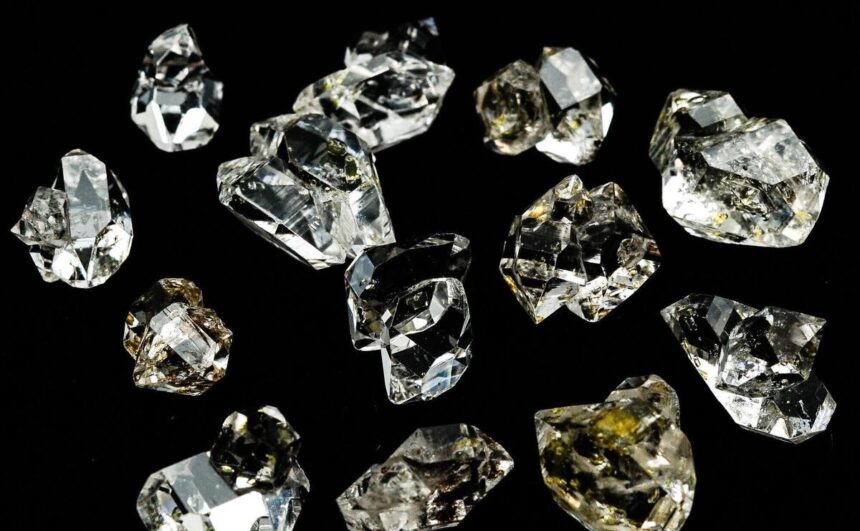What makes a younger buyer choose one diamond seller over another? For Millennials and Gen Z, the answer often comes down to values, transparency, and personalization. These generations are reshaping the diamond industry by demanding more ethical sourcing, digital convenience, and meaningful design.
Arizona, with its blend of cultural craftsmanship and modern innovation, is becoming a magnet for these new expectations. By adapting to shifting preferences and leveraging local strengths, the state is redefining how and why the next generation shops for diamonds.
A New Kind of Buyer: What Millennials and Gen Z Want
Millennials and Gen Z aren’t buying diamonds the same way previous generations did. Instead of focusing solely on tradition or luxury status, they prioritize values like ethical sourcing, sustainability, and transparency.
Many want to know where their diamonds come from, whether they’re conflict-free, and how the jewelry was made. That shift has pushed the industry (including in Arizona) to adapt in ways that better align with these evolving expectations.
Younger buyers are also drawn to personalization. Rather than choosing mass-produced designs, they seek unique pieces that reflect their identity. Digital convenience plays a big role as well.
These generations do their homework, compare prices online, and often want to explore collections virtually before walking into a store. For Arizona’s diamond market, tapping into these habits means offering not just quality stones, but also an engaging, informative, and tech-forward customer journey.
Arizona’s Jewelry Scene: Tradition Meets Innovation
Arizona’s diamond and jewelry scene is rooted in a mix of cultural heritage and modern innovation. The state has long been known for its Native American silver and gemstone craftsmanship, which continues to influence design aesthetics. This deep appreciation for artisanal quality and storytelling around stones resonates with younger buyers who value authenticity and meaning behind their purchases.
At the same time, Arizona jewelers are embracing new technologies that speak to a modern audience. Lab-grown diamonds, 3D-printed settings, and digital design previews are becoming more accessible.
These advancements help bridge the gap between tradition and the desire for customization. Arizona’s ability to combine legacy craftsmanship with cutting-edge tools positions it as a compelling destination for diamond buyers seeking both substance and style.
Local Jewelers Embracing the Modern Buyer
Jewelers across Arizona are adjusting how they interact with the next generation of buyers. Rather than relying on traditional sales tactics, they are focusing on education and experience.
Many offer consultations that walk clients through grading, clarity, carat comparisons, and ethical sourcing. This transparent approach builds trust, especially with buyers who are wary of being sold to rather than guided.
Customer experience has also evolved. Stores are creating welcoming, low-pressure environments, often offering private viewing rooms and tailored appointments. In-person visits are complemented by strong online presences, complete with chat support, video explanations, and digital try-on features. These updates show a real effort to meet Millennial and Gen Z buyers on their terms, both digitally and face-to-face.
Scottsdale and Phoenix: Hotspots for Luxury and Recommerce
Scottsdale and Phoenix have become key areas for younger diamond buyers, especially those interested in both luxury and resale value. The rise of authenticated pre-owned diamond markets has made it easier for consumers to buy high-quality jewelry at fair prices, without sacrificing ethical standards. Many Phoenix and Scottsdale diamond buyers now offer certified appraisals and flexible trade-in programs, helping younger shoppers maximize both style and value.
Many younger shoppers view diamonds not just as romantic symbols, but also as financial assets, making transparency and value retention essential. Recommerce (selling and buying pre-owned items) is particularly popular among Gen Z. In Arizona, this has translated into a growing interest in secondhand diamonds and trade-in programs.
Local jewelers have responded by offering services like certified appraisals and resale consultations, giving customers more flexibility. This model appeals to budget-conscious buyers who still want style and quality, but with more control over their spending and long-term value.
Educational and Cultural Drivers
Arizona offers more than just retail options, it also provides opportunities to learn about diamonds and jewelry in a deeper way. Gem shows, artisan workshops, and community events help educate the public about what makes a diamond valuable, how stones are sourced, and the art of jewelry-making. These experiences attract younger attendees looking for more than just a purchase, they want knowledge and a connection to the craft.
Culturally, there’s been a shift in how diamonds are used and understood. Younger buyers often choose diamonds to mark personal achievements or life changes, not just engagements or weddings. In Arizona, this openness is reflected in design trends and buying habits. The emphasis is less on tradition and more on self-expression, making the state’s diamond industry a natural fit for the next generation’s mindset.
Sustainability and Ethical Sourcing: A Key Advantage
One of the strongest ways Arizona is attracting younger diamond buyers is through its commitment to sustainability and ethical practices. These values aren’t just buzzwords. They’re deal breakers for many Millennials and Gen Z consumers. Offering conflict-free diamonds, promoting lab-grown alternatives, and explaining sourcing details are now central to earning trust and loyalty.
Arizona’s diamond industry has responded by making ethical practices more visible and verifiable. Some jewelers now include certificates of origin, while others invest in eco-friendly production techniques.
These efforts don’t go unnoticed by younger buyers, who are increasingly selective about where they spend their money. Sustainability isn’t a niche concern anymore, it’s become a mainstream expectation, and Arizona is aligning itself with that shift.
Conclusion
Arizona is capturing the attention of younger diamond buyers by aligning with what truly matters to them, authenticity, sustainability, and flexibility. From custom craftsmanship and resale opportunities to ethical sourcing and digital experiences, the state offers more than just beautiful stones.
It offers a buying experience that feels relevant, responsible, and rewarding. As Millennials and Gen Z continue to shape the market, Arizona’s ability to evolve ensures it stays not only competitive, but influential.


